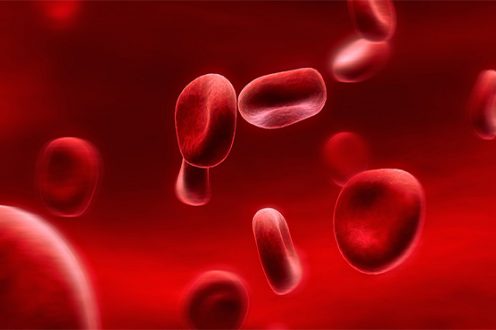Platelets are the type of cells that circulate within the blood inside our body and bind together when they encounter any damaged blood vessel. Their function is to stop the bleeding from the body in case of any injury by coagulation. Some foods serve best with the purpose of a sufficient platelet count, that is, dark green leafy vegetables, rice, yeast, beef liver, black-eyed peas, and the list continues.
A syndrome that is associated with the platelets of the body is sticky platelet syndrome. What is sticky platelet syndrome? Sticky platelet syndrome or SPS refers to a qualitative and thrombophilic autosomal dominant trait platelet disorder with a familial occurrence. This syndrome is regarded as the most frequent thrombophilia. It is visible in around 21% of the unexplained arterial thrombotic episodes and 13.2% unexplained venous thromboembolism (VTE).
Sticky platelet syndrome is known to be an adequate cause of various life-threatening complications.
Sticky Platelet Syndrome Symptoms
When the platelets of the human body do not perform their function effectively, some symptoms are exhibited; by the affected individual.
Some most common symptoms observed in patients with platelet-related anomalies include easy bruising, bleeding from the nose, bleeding into the gut, and heavy periods. Other symptoms of it may also include; excessive bleeding while performing major or even minor surgery. The above mentioned symptoms may vary between mild to severe.
Other symptoms of this platelet-related syndrome may include fatigue, blood flow in the urine or stool excreted by an individual, prolonged bleeding from cuts or wounds. The clinical, especially arterial-related symptoms of it, may also exhibit a state of emotional stress. Though, the most common symptom is the inability to clot readily.
Sticky Platelet Syndrome Causes
The nature of platelet-related syndrome maybe both hereditary or not. The sticky platelet syndrome, as already mentioned, is believed to be a kind of hereditary one.
The human immune system is responsible for the production of abnormal blood proteins, known as antiphospholipid antibodies. These antibodies, as a result, cause the platelets to clump together. For this reason, Hughes syndrome is also known as sticky platelet syndrome. This syndrome may be caused, as a result of being subjected to certain viral or bacterial infections. For instance, an E.coli or the parvovirus may cause the sticky platelets to form eventually, leading to the overall thickening of the blood. Medication used for epilepsy may also be considered; as its cause.
Sticky Platelet Syndrome Diagnosis
The sticky platelet syndrome is chiefly diagnosed with the help of demonstrating hyperaggregability of the platelets. It is characterized; by light transmission aggregometry and dose-independent platelet aggregation due to epinephrine. In daily lab practice, epinephrine may be used either solely or accompanied by adenosine diphosphate (ADP).
However, the test is not possible for those individuals treated with aspirin or acetylsalicylic acid. Light transmission aggregometry is possible only when the body has ultimately removed acetylsalicylic acid.
Other methods of diagnosis are also included; when dealing with platelet-related disorders. Those diagnostic methods include flow cytometry. In flow cytometry, lasers are used to determine the proteins present on the surface of platelets versus how they vary after the activation of the platelet. Blood tests are also performed.
Sticky Platelet Syndrome Treatment
After diagnosing the presence of sticky platelets inside the blood, the next concern is to treat and manage that in particular. This platelet-related syndrome is usually treated; with aspirin tablets which perform the function of vasodilation. Patients diagnosed with sticky platelet syndrome are treated; with a low dose of aspirin tablets, that is, 80 to 100 mg of aspirin tablet per day.
In addition, anticoagulants are also prescribed; following the development of a significant clot from a medical point of view. Those anticoagulants may include the use of Warfarin, Coumadin, or clopidogrel, also known as Plavix. Another method used to treat this syndrome is to perform the procedure for thromboelastography to identify any hypercoagulability and monitor as a result, the anti-plate therapy.
However, an emergency procedure is sometimes also accompanied. It uses a medical procedure known as plateletpheresis after the occurrence of a major stroke or following dangerous blood clotting.
 Health & Care Information
Health & Care Information 


